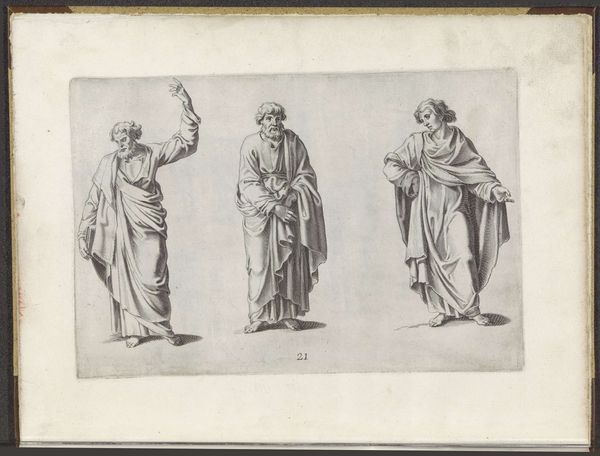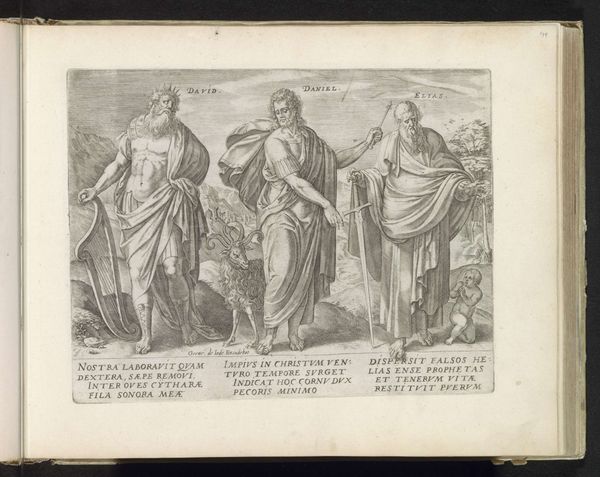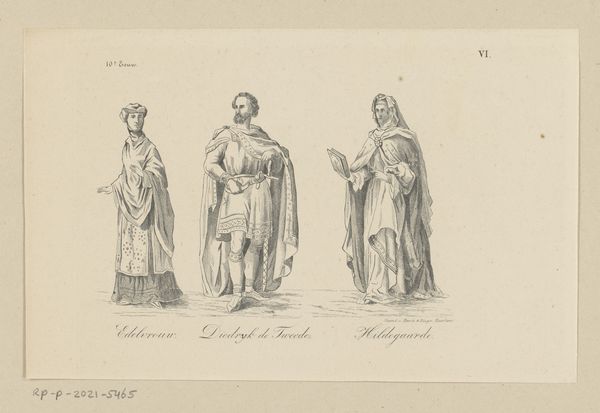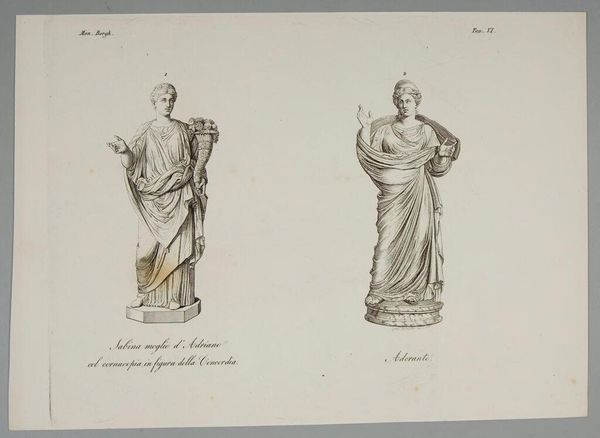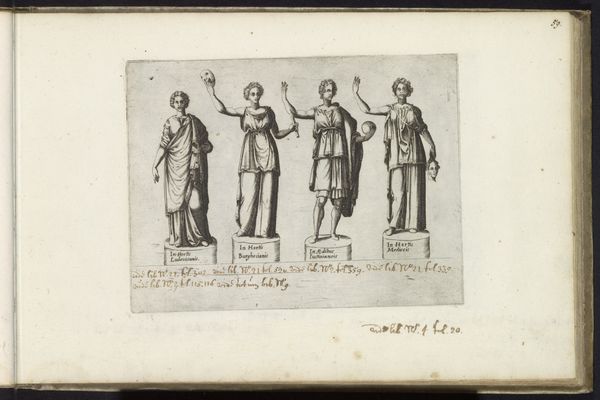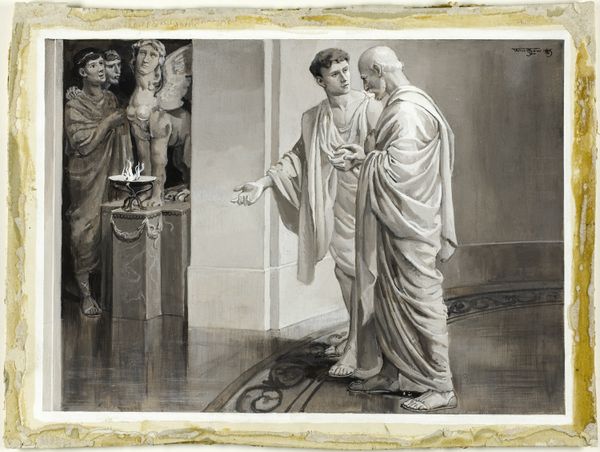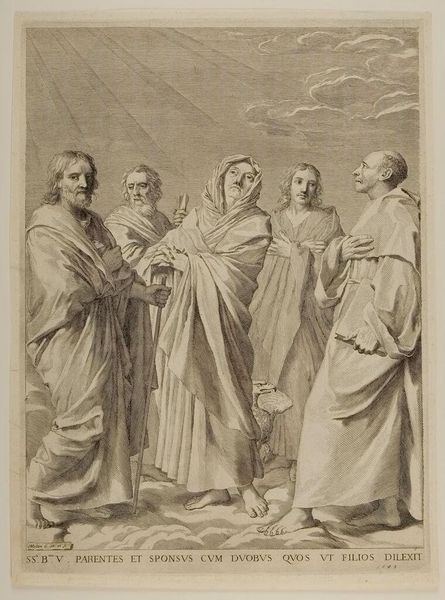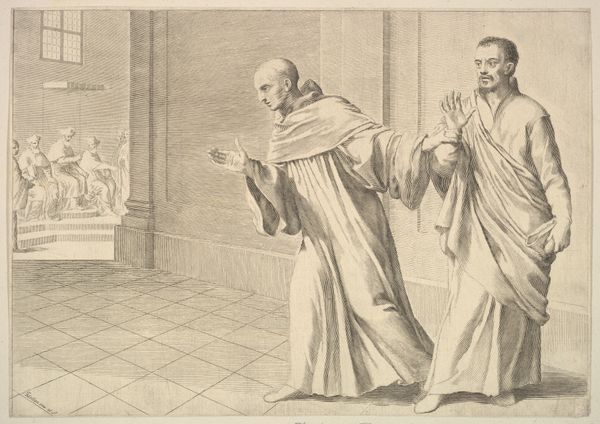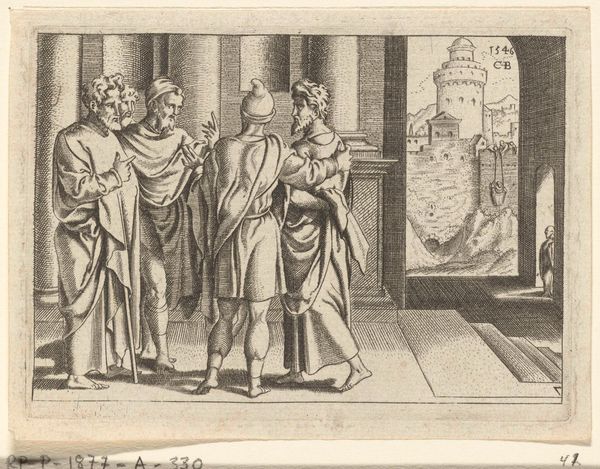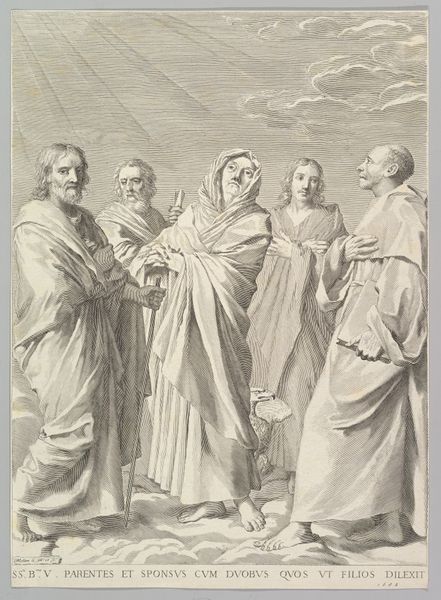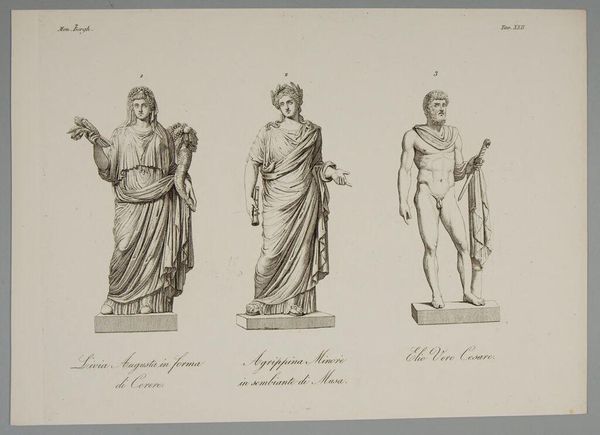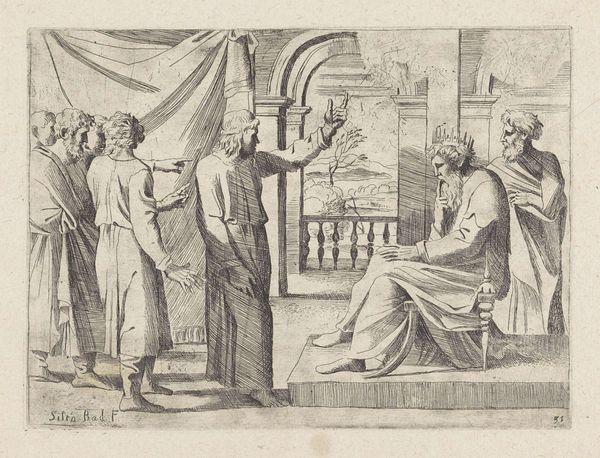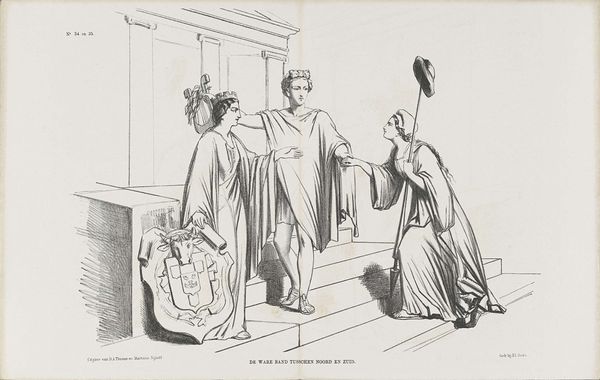
print, engraving
#
portrait
#
baroque
# print
#
old engraving style
#
figuration
#
history-painting
#
academic-art
#
engraving
Dimensions: height 200 mm, width 273 mm
Copyright: Rijks Museum: Open Domain
Curator: Here we have "Beeld van een man in toga," or "Figure of a Man in a Toga," an engraving created in 1608 by Cornelis Galle I, part of the Rijksmuseum's collection. Editor: It has an air of neoclassical gravitas, but the line work is very sharp, controlled, and a bit rigid; the drape of those togas looks incredibly weighty, almost metallic. Curator: Yes, Galle was quite adept at capturing textures through the etching and engraving process. But think about what the toga represented: status, citizenship, power. This image likely reflects Galle's academic approach in visualizing power, perhaps commissioned to promote certain social values of the time. We also see different stages in their lives, their youth is a part of who they become in society. Editor: Exactly, these are commodities aren't they? Power objects translated and accessible through a readily reproducible medium like the engraving. What about the material quality of that paper it’s printed on though? We never think about it - where it comes from, who labored to produce it, and for whom was it available. This could inform ideas on the economics of portraiture at this time, if not of that material and what access society had at the time to paper as such. Curator: An interesting point. I also consider the perspective: it appears from a distant objective, which further reinforces social barriers, the inaccessibility of such figures... Or, are we, the audience, made complicit to idealizing specific versions of masculinity by Galle through the manipulation of this artistic lens? Editor: Possibly - still that begs a question. How did these printed images circulate, and what meanings might they have acquired within different socio-economic groups? The lines in these works had to be etched by somebody, and by whose standards and requirements are those marks being translated into images to be printed? Curator: Considering its original context and possible intention helps us examine not only how historical images of powerful men shaped their identities then, but also how we continue to engage with gender, power, and representation now. Editor: Agreed. Examining this work with an eye toward materiality and social circulation makes us better understand the power of images within systems of value.
Comments
No comments
Be the first to comment and join the conversation on the ultimate creative platform.
